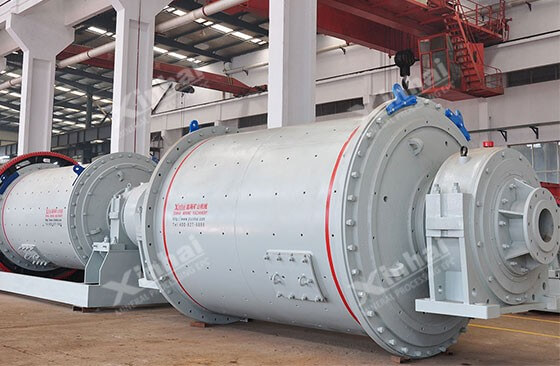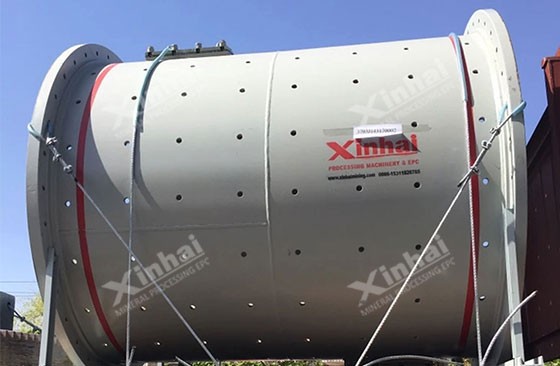

Warm Tip: If you want to know more details about equipment, solutions, etc, please click the button below for free consultation, or leave your requirements!
In this post, we're going to talk about how to debug ball mill.
We'll do it in these 4 steps:
Check whether debugging conditions are met
Inspections before debugging
Empty running
Test running with load
Let's dive right in!
Ball mill is an indispensable equipment in the concentrator and the most critical equipment in the whole plant construction, so it is very important to ensure the stable operation of the ball mill. But before the formal operation, ball mill debugging is a very important step, can not appear any deviation, otherwise it will lead to the ball mill product size can not meet the requirements, or even reduce the metal recovery. So how to carry out ball mill debugging work?

Ball mill debugging mainly from whether to meet the debugging conditions, empty running and load running, check the status of the equipment in several aspects.
Complete the installation of equipment according to the drawing to ensure that all parts of the equipment are in the correct position. Complete installation process record and acceptance is required.
The strength of the equipment foundation concrete and the strength of the secondary grouting concrete should meet the design requirements of the strength grade.
The PLC control system, temperature gauge and pressure gauge of the ball mill can be put into use reliably.
The installation of ball mill equipment is completed, and the system of grinding workshop is complete.
The surrounding environment of the equipment is free of garbage and sundries, and the scaffolding is removed.
Ensure smooth passage for operators.
Ensure that there are no inflammable or explosive materials in the surrounding environment, and equipped with appropriate fire fighting facilities to prevent accidents.
Ensure that sufficient amount of lubrication is used during the operation of the ball mill.
Detailed inspection is required to keep the equipment in good condition. The details are as follows:
The fan block and bearing bush of the lower bearing block should be calibrated with the center line; Big gear and small gear are calibrated according to instruction.
The fan block of the lower bearing block, the bottom plate of the pinion, the bottom frame of the main gear and the bottom frame of the motor are fully grout, and the grout strength meets the design strength requirements.
All anchor bolts, connecting bolts and compression bolts of the main gear shall be tightened. The fixing bolts of the main gear should be tightened according to the specified torque.
The bearing bush shall be mounted on the fan block of bearing block according to the rotation direction of the ball mill.
The bearing bush is calibrated according to the axial guide ring.
The bearing seat seal is installed correctly and the joint is sealed with sealant.
All lubrication points are supplied in sufficient quantities as required for lubrication.
The pipes and hoses should be installed in the correct order and in accordance with the assembly instructions. There is no blockage in each pipe.
The inlet and outlet hopper connection is well sealed.
The temperature sensor is installed in the bearing bush. The electrical debugging has been carried out. The sensor head is in good contact with the metal.
Ensure that monitoring equipment is connected; Flow monitor, pressure switch and temperature sensor are set. Reliable indication of oil pressure gauge, thermometer, accident button and interlock device.
Ball mill lubricating oil station, bearing, reducer, motor lighting well.
Prepare the necessary tools in advance: thermometer, vibration meter, listening stick, intercom, test run record form.

First, let the motor run for 2 hours under the condition of empty load of the ball mill. During this period, ensure the correct rotation direction of the motor and the normal and reliable operation of the accident button to ensure safety.
If the motor runs normally when idling, then idling for 2 hours with reducer.
Connect reducer and pinion coupling, install protective cover and start lube system Ken cooling water system. Switch on the power supply of the ball mill and press the accident button to stop the machine after normal rotation. Check the main bearing, motor and gear size to determine whether the ball mill is rotating in the right direction. If there is no abnormal situation, start the ball mill to run for 8 hours.
During the test run, the bearing seal should be checked for heat. The lubricating oil should be under mild pressure and the temperature should be controlled between 40-50℃. If there is any abnormality, the cooling should be stopped immediately. At the end of operation, check the distribution of force between gears, should be more than 70%. If the lubricating oil system works normally without oil leakage, the ball mill runs smoothly without obvious noise, the vibration value of the main bearing, the motor and the pinion is less than 0.1mm, and the parts are not damaged or hot, then the empty car runs normally.
According to the ratio of the ball mill, a certain amount of steel ball is added to the cylinder body of the mill, and the steel ball is added in batches. During the running process, the bearing temperature, current, and vibration intensity are measured. After the addition of the ball mill, it shall start to run with load, add grinding materials with 70% of the specified load, and continue to run for more than 10 hours. In the process, it shall tighten the liner thread joint of the mill and check the thread connection place frequently to prevent loosening.
When operating with load, the ball mill should meet the following requirements: the vibration of each part shall not exceed 0.1mm, the electric current of the motor shall have no abnormal fluctuation, the running process shall be stable, the noise shall be small, the connection bolts shall be tightened, and the cylinder shall have good sealing.
Above is the whole ball mill debugging process. If your ball mill has some problem, you can check this post for solution. But still, technican's advice would be necessary.
Last: Development of Hydrocyclone
Next: What Are the Requirements for Ball Mill Testing, Start and Stop?
14 Steps to Debug Ball Mill
 2
2
 3260
3260
2Ball Mill or Rod Mill? This is a Question?
 4
4
 4752
4752
3How to do the Ball Mill Repair and Maintenance Work?
 0
0
 3284
3284


What Are the Differences Between CIP and CIL?
 11383
11383
 0
0